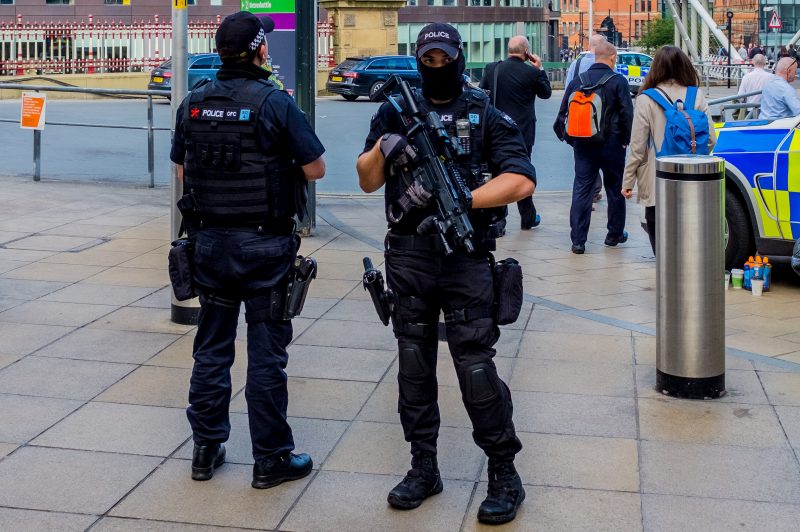Western society is engaged in what has been referred to as an “arms race” against terrorism. Atrocities are increasingly characterised by novel and low-cost methods with the sole aim of causing as much death and destruction as possible.
So in this age of unpredictability, how can the emergency services prepare themselves to respond to a terror attack, like the one at the Ariana Grande concert in Manchester in 2017?
‘The terrorist’ is no longer a distinct enemy from a defined terrorist organisation, but is increasingly associated with diverse and wide-ranging beliefs.
So in this age of unpredictability, how can the emergency services prepare themselves to respond to a terror attack, like the one at the Ariana Grande concert in Manchester in 2017?
We’ve looked into the psychology of decision making and how the key lessons from The Kerslake Report – which evaluated the emergency response during the Manchester attack – could be applied on the ground.
Design for the unpredictable
Operational plans must be designed to reflect the unpredictable nature of terror attacks. One of the key lessons from the Kerslake Report related to the mismatch between current operational procedures and the nature of real-world attacks.
It was noted that the agreed joint operational response to terror attacks – so-called Operation PLATO – did not fit Manchester.
An inherent conflict for incident commanders is the trade-off between saving public life while ensuring that this does not disregard the safety of responders.
Operation PLATO is based on an assumption of firearms being present, meaning that only specialist trained and protected responders can operate in the affected areas.
However, the Manchester attack was the result of a bomb and no firearms were present. In fact, none of the most recent attacks in the UK, such as Finsbury Park, London Bridge or Westminster involved firearms.
This begs the question of how the emergency services can best prepare for terror attacks when modern day terrorism is becoming less and less predictable?
One way to cope with unpredictability during operational planning could be to shift focus away from the “type” of incident (for example, firearms) and focus on the dynamic risk currently faced at scene (threat to lives of responders).
Our research found an inherent conflict for incident commanders is the trade-off between saving public life while ensuring that this does not disregard the safety of responders.
Operation PLATO did not fit the Manchester attack because the response was based on the assumption that a terror attack involved an active threat to responder life. As a result, fire crews played “no meaningful role”.
However, there was no active threat. Developing operational procedures that focus on the actual risk to responders, rather than hypothetical assumptions about the type of risk involved during a terror attack, may make future operational planning more effective.
Training and decision making
There needs to be more training to develop skills in dynamic decision making. The Kerslake Report praised the work of Greater Manchester Police’s Force Duty Officer.
More experienced officers use flexible thought processes allowing them to adapt their decisions to changing situations, whereas less experienced officers used more rigid processing.
They recognised that standard protocols did not fit the situation and allowed responders to operate in an area from which they should (according to PLATO) have been withdrawn.
This decision to deviate from procedure was hailed as “one of the most crucial decisions taken” and the Force Duty Officer was congratulated for their dynamic “life or death” decision making.
But if this decision had gone wrong – for example a second explosive device was in the area – things would have turned out very differently. It is important therefore to consider how to best support commanders to know when and when not to break procedures, without putting the public at risk.
Psychology teaches us that experienced people can make very fast and accurate decisions in their workplace. This is largely due to what has been termed “recognition primed” decision making, which enables them to quickly recognise subtle cues in the environment that trigger learned responses. Experts can also quickly identify when standard rules no longer fit and they need to develop innovative ways to solve the problem instead.
Our research with firearms police officers shows that more experienced officers use flexible thought processes allowing them to adapt their decisions to changing situations. Whereas less experienced officers used more rigid processing. Such adaptability is thought to be crucial under the uncertain and pressurised conditions of a critical incident.
The importance of flexibility
While emergency services train their staff in technical skills, the development of flexible decision making is often not a specified learning objective. It may occur as a by-product of training or “on the job” experience but it is rarely a core focus.
One way to expedite the development of flexible thinking is through systematically exposing emergency responders to a variety of simulated scenarios where, through guided practice and feedback, they can develop adaptive decision making.
By focusing on adaptive expertise specifically in training, (such as “worst case” scenarios that cannot be solved through standard operating procedures), the type of dynamic decision making that was so highly praised in Manchester may be more quickly developed in trainees.
![]() One thing that shines through from our research is the importance of flexibility. Terrorist attacks are increasingly unpredictable, which can render previous response plans obsolete.
One thing that shines through from our research is the importance of flexibility. Terrorist attacks are increasingly unpredictable, which can render previous response plans obsolete.
Manchester provides a key lesson in identifying how the gap between hypothetical plans and the reality of incidents is widening. Taken together, it is hoped that the future of emergency training embeds these lessons, providing a greater focus on the need for flexible planning and dynamic decision making.
This article was originally published on The Conversation. Read the original article.
Photo credit: Ian Livesey/Flickr


